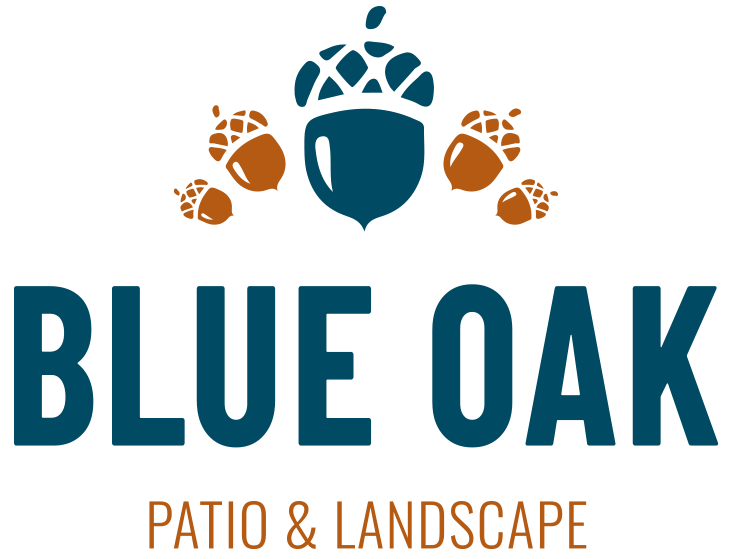It’s time to seize the mulch! As tempting as it is, it’s not time yet. Mid-May is the ideal time for putting down your mulch! Take full advantage of early spring mulch sales, but just wait to actually put it down.

Why?
Soil temperatures: It normally isn’t until mid-May that the soil has warmed to about 55˚. It’s this 55˚ mark we’re aiming for, so that our roots can grow and thrive. The mulch will help keep the soil temperatures in this range and prevent as much temperature spiking during the day and dipping during the night. Mulch will also help insulate the soil and keep it from getting as hot during the summer.
Moisture: Mulch will help keep all the spring rain we receive in your soil. Mulch acts as a barrier and slows moisture from evaporating from the surface of the soil. However (this is big!) if mulch is put down too thick (more than 2”), this mulch barrier will compact and restrict air flow, as well as becoming water impermeable, hydrophobic. If this happens, your mulch will act as a barrier to water, not letting it seep into the soil, but rather, run off. This is bad! You do not want hydrophobic soil! Those plants, whether newly planted or well established, need that rain water just to survive, let alone thrive!
More reasons not to mulch over 2” thick:
1. Another great reason not to put your much down any more than 2” thick, is that weeds will grow in your mulch. I often hear the argument that “I put mulch down to help keep the weeds down.” This statement can easily be misunderstood and I feel the need to break it down. Mulch can “keep weeds down” in the sense that it will shade out weed seeds in your soil. If you think more mulch the better, I’m sorry to be the bearer of bad news – weed seeds will grow in the mulch! What about perennial weeds? Established perennial weeds can grow through a 2” thick mulch barrier, sure, but they can just as easily grow through a 3” or deeper layer – think dandelion and the loathed thistle. By putting more mulch down to suffocate established weeds, you’ll not only have weeds growing through your mulch, but in your mulch as well!
2. Thick mulch will also create undesirable soil conditions because the plants you’d like to see thriving aren’t receiving enough water. You may also be lucky enough to wittiness dog barf fungus. That’s right, there is a fungus that can grow on mulch commonly called dog barf. Any guesses why? This fungus is a tell-tale sign your soil is not receiving enough air circulation. The solution, clear away the mulch. You may need to use a shovel or pitch fork to pierce threw the mulch as it could be compacted.
Okay, so now you know the ideal time to put mulch down and how much to put down, but what kind? There are so many options, and it does matter what type of landscape you have or intend to have.
Black Dyed Hardwood – This provides great contrast in color in the garden, especially along the front at the bed lines. No matter how well marketed, it will fade in color – eventually. But before it does, depending on the brand, the black dye will dye everything it touches, clothing, hands and usually most upsettingly driveways and walkways. It’s a great mulch to get that clean crisp formal look, unfortunately, not the easiest if you’re the one handling it. With a good hard spring rain, the dye can wash off onto hard surfaces if it wasn’t fully cured, which unfortunately is often the case in the spring when mulch producers are working overtime to keep up with the demand.
Brown Hardwood – See the above rant. Okay, that’s a little harsh…there are some really nice brown hardwood mulch options available, that are processed enough that you’re left with a fine texture and rich, more natural looking, brown color. These also create a clean, crisp look at the front any garden bed. You can usually catch a good spring sale on the hardwood mulches to get even more for your dollar.
Pine Bark/Nuggets/Needles – Pine options have a naturally dark brownish/red color and contain no dye. These types of mulch DO ADD to your soil profile and help to break up the dense clay because this mulch is considered organic matter! As this mulch starts to break down and decompose into your soil, it will add some acidity as well. This is great for us central Ohioans because our clay soils tend to be on the alkaline side of the pH scale. Who cares you say? Most ornamental trees and shrubs benefit from a little acid kick, but especially Hydrangeas, Azaleas, Rhododendrons, Mountains Laurels, Pieris, Hollies, Inkberries, Japanese Maples, and Crape Myrtles. Unfortunately, you do have to pay for these added benefits as pine products are going to be a little pricier than most hardwood mulches.
Leaf Mold/Compost – This mulch is primarily made up of ground up leaves that are slightly decomposed and the result is a nice rich dark brown color. This mulch is great in adding organic matter to your soil profile. It is also safe to use around your vegetables and herbs.
Congratulations! You’ve made it through the mulch soap box speech. One last thing- you don’t have to mulch every year! Mind blowing, right? But it’s true. If you happened to have put on the mulch a little thick last year or its still 2” thick in areas, simply turn the mulch with a small pitch fork or pronged tool and fluff your mulch and you’ll be all set for another season.
